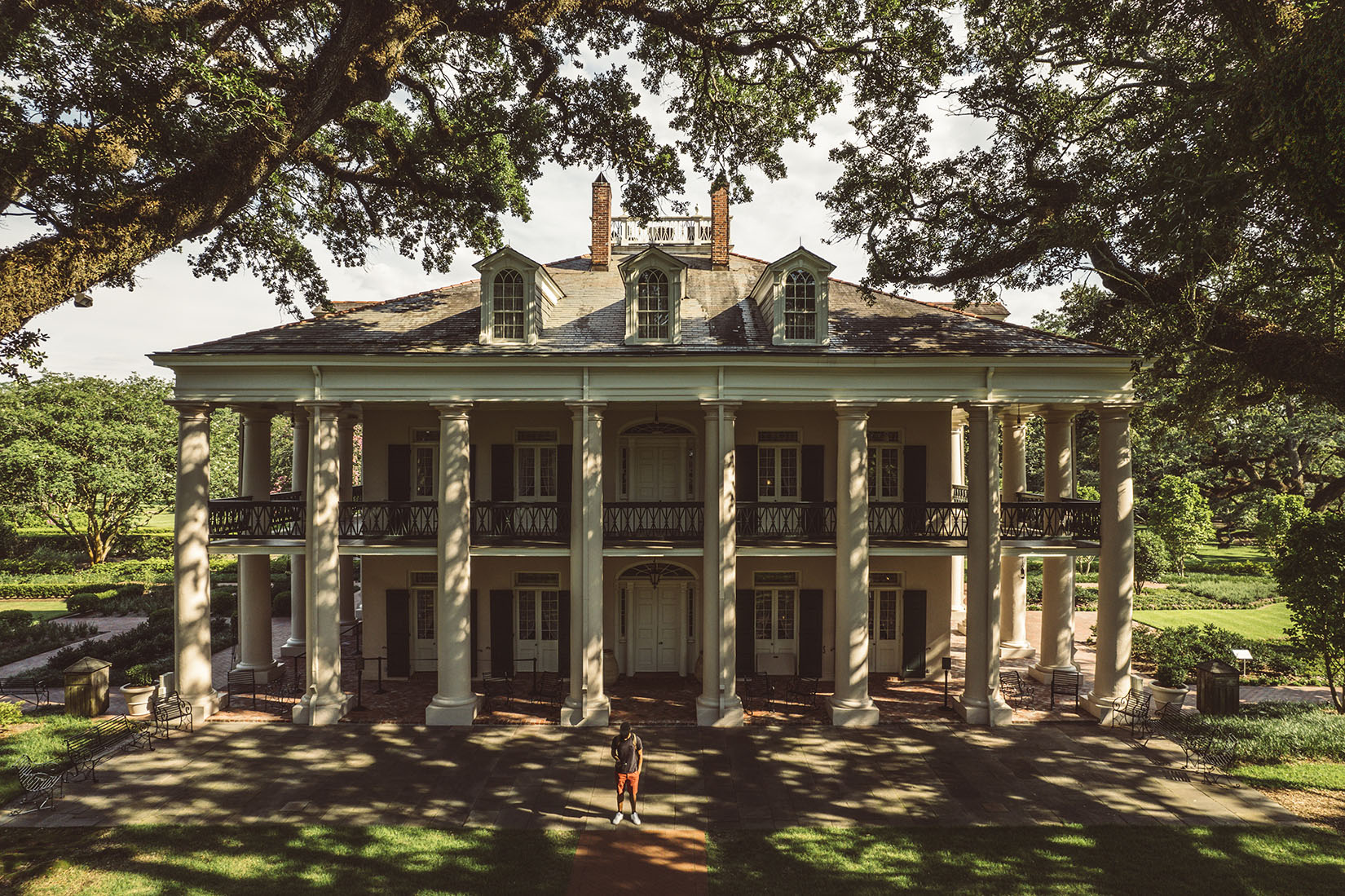
Why We Must Visit Plantations
Walking the grounds of a slave plantation can be surreal – particularly for African-Americans. The horrors, atrocities and dehumanizing conditions occurring in these now tranquil environments is unsettling and no amount of meticulous landscaping can change that. But does that emotional discomfort mean we should avoid going? Absolutely NOT. In fact, if you’re visiting New Orleans, a plantation tour should be high on the list of things to do.
There are several Antebellum plantations along Louisiana’s River Road: Evergreen, Whitney and Oak Alley plantations to highlight a few. So many famous movies have been filmed along this corridor, Django, Roots, 12 Years A Slave, Mandingo and many more. There is nothing more surreal or chilling than being on one of these properties when there is filming going on. The actors, dressed authentically add a solemn and very realistic feel to what life was like when these plantations held enslaved people captive. During this visit we spent several hours at the Oak Alley.

The 50-minute drive from downtown New Orleans to Oak Alley is scenic in its own right passing over swamps, through farmland and eventually along River Road. The weather is intense: hot and humid. And it’s not incredibly difficult to imagine the miserable conditions men and women labored through to make Oak Alley successful nearly two hundred years ago.



“Between 1836 and the Civil War, over 220 men, women and children were enslaved at Oak Alley,” reads a plaque placed inside a replica of a slave house. “Dehumanized and quantified like any other commodity, they appear in sales records and inventories, yet as people they have been forgotten by history.
This is a respectful recognition of the people on whose backs this plantation was built. For most of them, a name is all that remains of their story.”
The aforementioned individuals usually worked inside the “Big House,” or labored away in the sugar cane fields. In this region of the south, sugar or “white gold” as it was called at the time, was the main cash crop – not cotton. The women and children working inside the home were tasked with chores like fanning adults as they dined and gossiped for hours.
The previous owner of Oak Alley once penned to her son, “We will always be the masters.” Thankfully, she lived long enough to see many of those slaves freed as her finances evaporated and her core beliefs ultimately smothered. One does find some joy in seeing other African-Americans walking around her former compound as confident, safe and free citizens. I’m one of them.
My father’s family roots are based in Louisiana, and with the last name Berry (French, British origin), my ancestors possibly worked on a plantation just like this one. Visiting our history shows us where we come from, which helps us understand our place and how to shape our future. That’s why it’s imperative for everyone that has an opportunity to visit places like this.
You can find more information about visiting Oak Alley at their website.
Author
Book An Experience
Melanin Miami
Discover Miami's African American heritage on the Melanin Miami Tour, a exploration of cultural landmarks and Black-owned businesses.
Share this article
Discover Sepi Stories

-
8553 N Beach Street Suite 138
Ft Worth, TX 76244
- Become a Vendor
- Home
- My Passport (Coming Soon)
- Book Experiences
- Edit Profile
- Login
- Logout
Support
- FAQs (Coming Soon)
- Phone: 641-754-0072
- Email: contact@sepitravel.com
- Sitemap
- Privacy Policy
- Terms & Conditions
- Non Discrimination Policy

-
8553 N Beach Street Suite 138
Ft Worth, TX 76244
- Become a Vendor
- Home
- My Passport (Coming Soon)
- Book Experiences
- Edit Profile
- Login
- Logout
Support
- FAQs (Coming Soon)
- Phone: 641-754-0072
- Email: contact@sepitravel.com
- Sitemap
- Privacy Policy
- Terms & Conditions
- Non Discrimination Policy
Sepi LLC © All rights reserved 2024.







